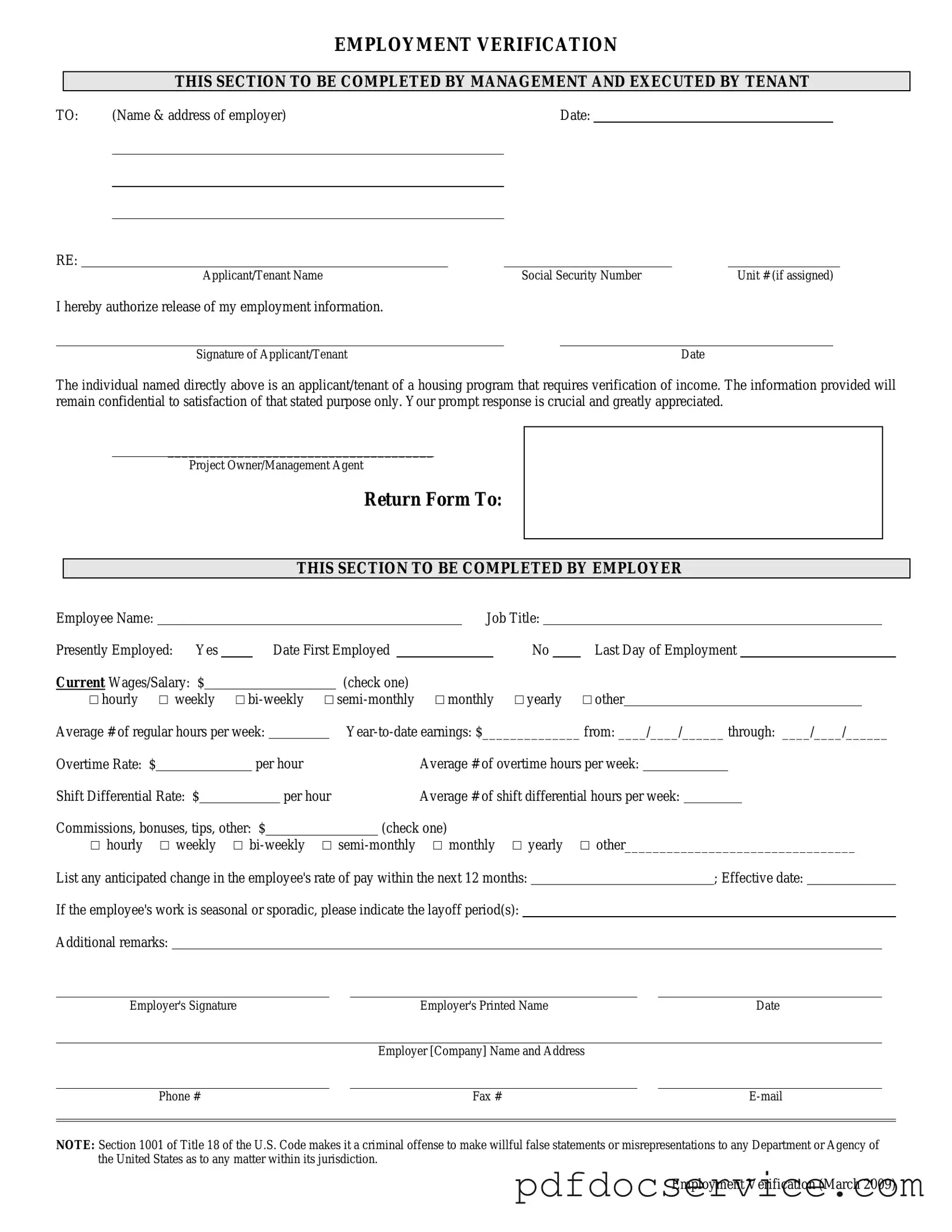Fill Your Employment verification form Form
The Employment Verification Form serves as a crucial document used by employers to confirm a candidate's employment history and job-related details. This form helps ensure that the information provided by applicants is accurate, fostering trust in the hiring process. Understanding its importance can empower both job seekers and employers in making informed decisions.
Open Employment verification form Editor
